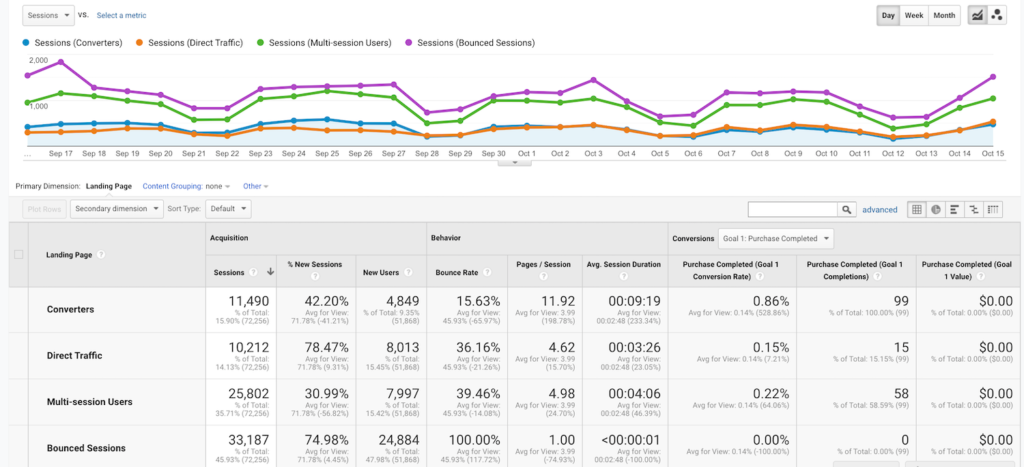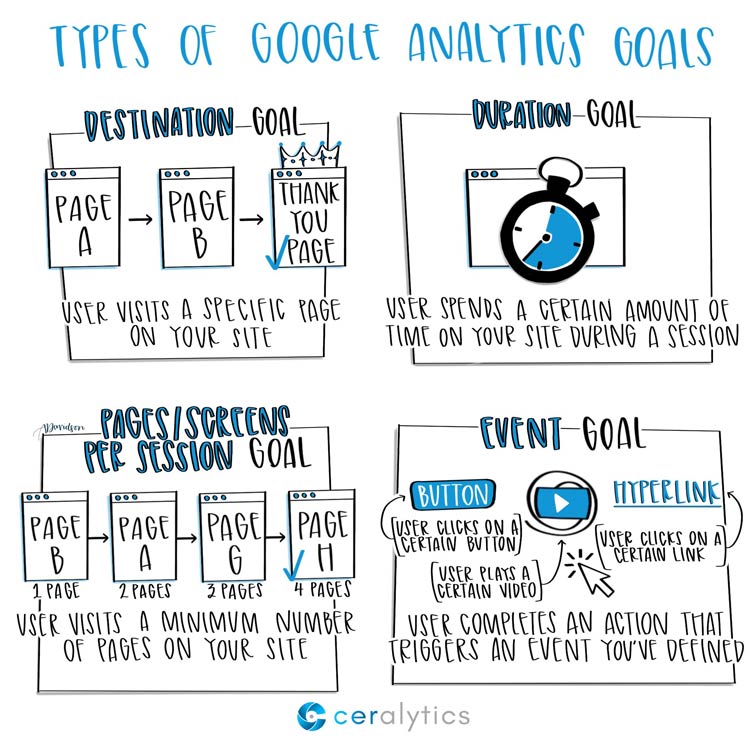Comprehensive Checklist of What Data Is Google Analytics Goals Unable to Track
Comprehensive Checklist of What Data Is Google Analytics Goals Unable to Track
Blog Article
Revealing the Blind Attractions: Understanding What Google Analytics Goals Can not Measure
In the realm of electronic analytics, Google Analytics stands as a powerful tool for monitoring and assessing on the internet individual interactions. Comprehending what Google Analytics objectives can not gauge is crucial for obtaining a detailed sight of individual behavior and involvement.
Individual Behavior on External Operatings Systems
Comprehending just how individuals interact on outside platforms is critical for enhancing on-line methods. External systems, such as social networks networks, referral web sites, and online discussion forums, play a significant role in driving web traffic to a firm's internet site. By examining user actions on these platforms, organizations can acquire beneficial understandings right into the effectiveness of their advertising and marketing efforts and the preferences of their target market.
One key aspect of individual actions on external systems is the reference source. By tracking where the individuals are coming from, organizations can identify which platforms are driving one of the most traffic to their internet site. This information can help business allocate their resources extra effectively, focusing on the platforms that generate the best results.

Offline Interactions and conversions
Analyzing user behavior on external platforms provides important insights into online techniques; however, taking into consideration offline conversions and communications is similarly essential for an extensive understanding of a company's overall efficiency. While Google Analytics excels at tracking on-line interactions, it falls short in recording the full client journey that commonly consists of offline touchpoints. Offline conversions, such as in-store purchases or phone inquiries, play a significant duty in several organizations' success. Neglecting these interactions can result in an altered view of the efficiency of advertising campaigns and overall organization performance.

Attribution Beyond Last Click
When delving into the realm of electronic advertising and marketing analytics, it ends up being important to look past the single touchpoint of the last click for a much more extensive understanding of acknowledgment. While Google Analytics gives important understandings into individual behavior, counting entirely on last-click attribution can be restricting - what data is google analytics goals unable to track. Attribution designs that surpass the last click use an extra nuanced sight of the consumer journey, thinking about all the touchpoints that bring about a conversion
Acknowledgment past the last click allows marketing experts to assign credit report to numerous interactions along the conversion path, providing a more clear image of the performance of different marketing networks. By exploring multi-touch acknowledgment models such as linear, time degeneration, or position-based attribution, services can better allot their advertising spending plans and maximize their methods for optimal influence.
Understanding the influence of each touchpoint in the conversion process is crucial for making notified choices and making the most of ROI. By accepting acknowledgment beyond the last click, services can obtain deeper insights into consumer actions and customize their marketing initiatives Going Here better.
Cross-Device and Cross-Browser Monitoring

Similarly, cross-browser tracking complements cross-device tracking by catching customer habits as they switch over between different internet internet browsers. Recognizing just how individuals connect with websites on numerous web browsers can aid marketers maximize their on-line experiences to make certain consistency and performance throughout various platforms.
Qualitative Information and User Intent
Recognizing individual intent with qualitative information evaluation is crucial for establishing targeted electronic advertising and marketing methods that reverberate with the needs and preferences of the target audience. Qualitative data offers insights right into the 'why' behind individual actions, dropping light on motivations, emotions, and choices that measurable information alone can not capture. By examining customer comments, comments, and interactions, marketing professionals can reveal valuable information about individual intent, allowing them to customize their messaging, material, and offerings to better straighten with what their audience is seeking.
Qualitative data also assists in recognizing the you could check here context in which individuals engage with a website or app. This contextual understanding enables marketing experts to create more appropriate and customized experiences, inevitably driving greater involvement and conversion prices. By diving right into individual intent through qualitative information analysis, businesses can acquire a much deeper understanding of their target market, leading to much more efficient advertising methods that meet customers' demands and expectations.
Conclusion
In final thought, Google Analytics objectives have restrictions in gauging user habits on outside systems, offline conversions, attribution past last click, cross-device and cross-browser monitoring, and qualitative information connected to individual intent. what data is google analytics goals unable to track. It is very important for services to be conscious of these dead spots in order to supplement their data analysis with various other devices and techniques to obtain an extra detailed understanding of their target market and enhance their general digital advertising and marketing methods
By evaluating user behavior on these platforms, organizations can obtain beneficial understandings right into the effectiveness of their advertising and marketing initiatives and the preferences of their target audience.
Evaluating individual behavior on external platforms offers important insights into online approaches; nevertheless, thinking about offline conversions and communications is just as important for an extensive understanding of a company's overall performance.In electronic advertising and marketing analytics, moving beyond last-click acknowledgment to check out cross-device and cross-browser tracking is important for getting a holistic understanding of individual interactions throughout different systems and devices. By examining individual comments, remarks, and interactions, marketing experts can reveal valuable details regarding customer intent, permitting them to tailor their messaging, material, and offerings to much better straighten with what their target market is seeking.
By delving into customer intent via qualitative data evaluation, businesses can acquire a deeper understanding of their target audience, leading to a lot more efficient marketing techniques find more that satisfy individuals' expectations and requirements.
Report this page